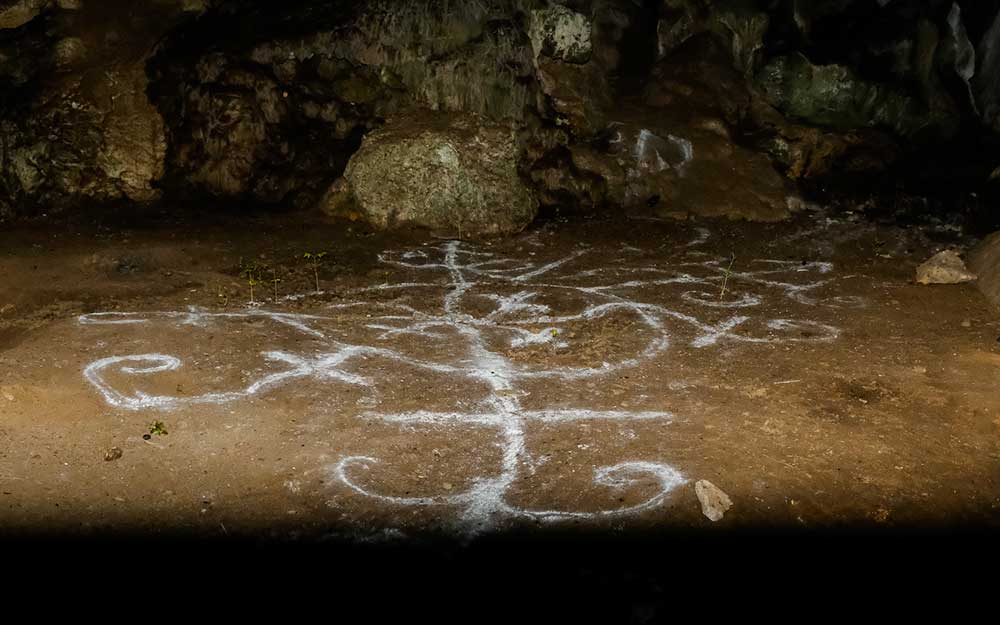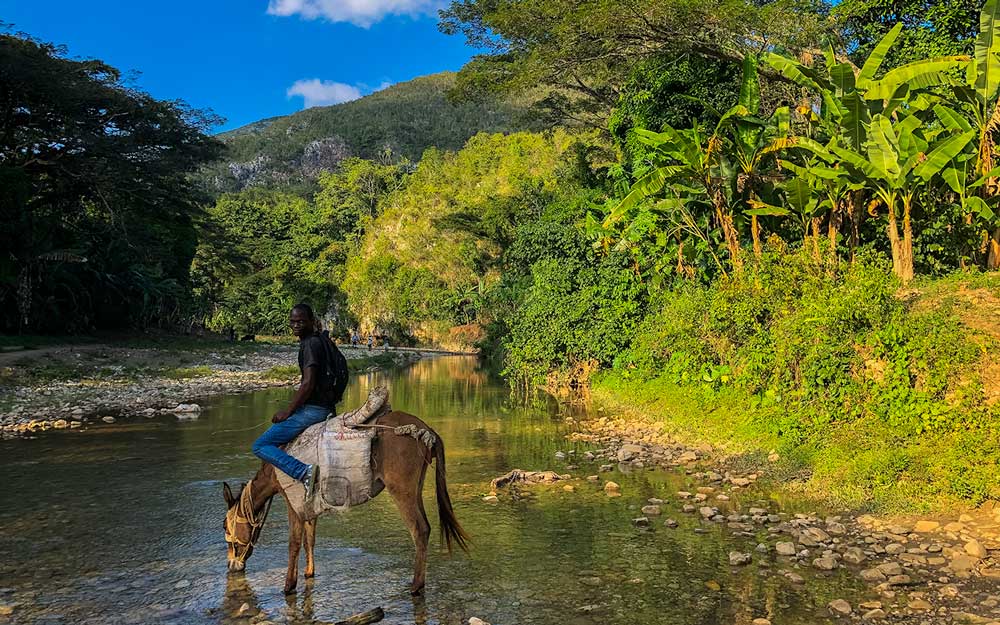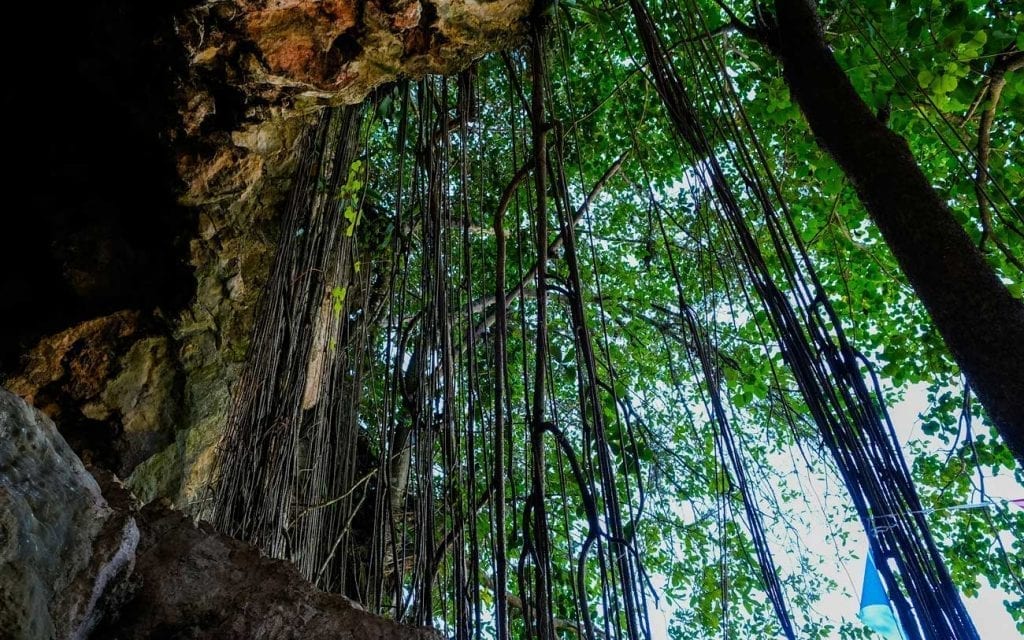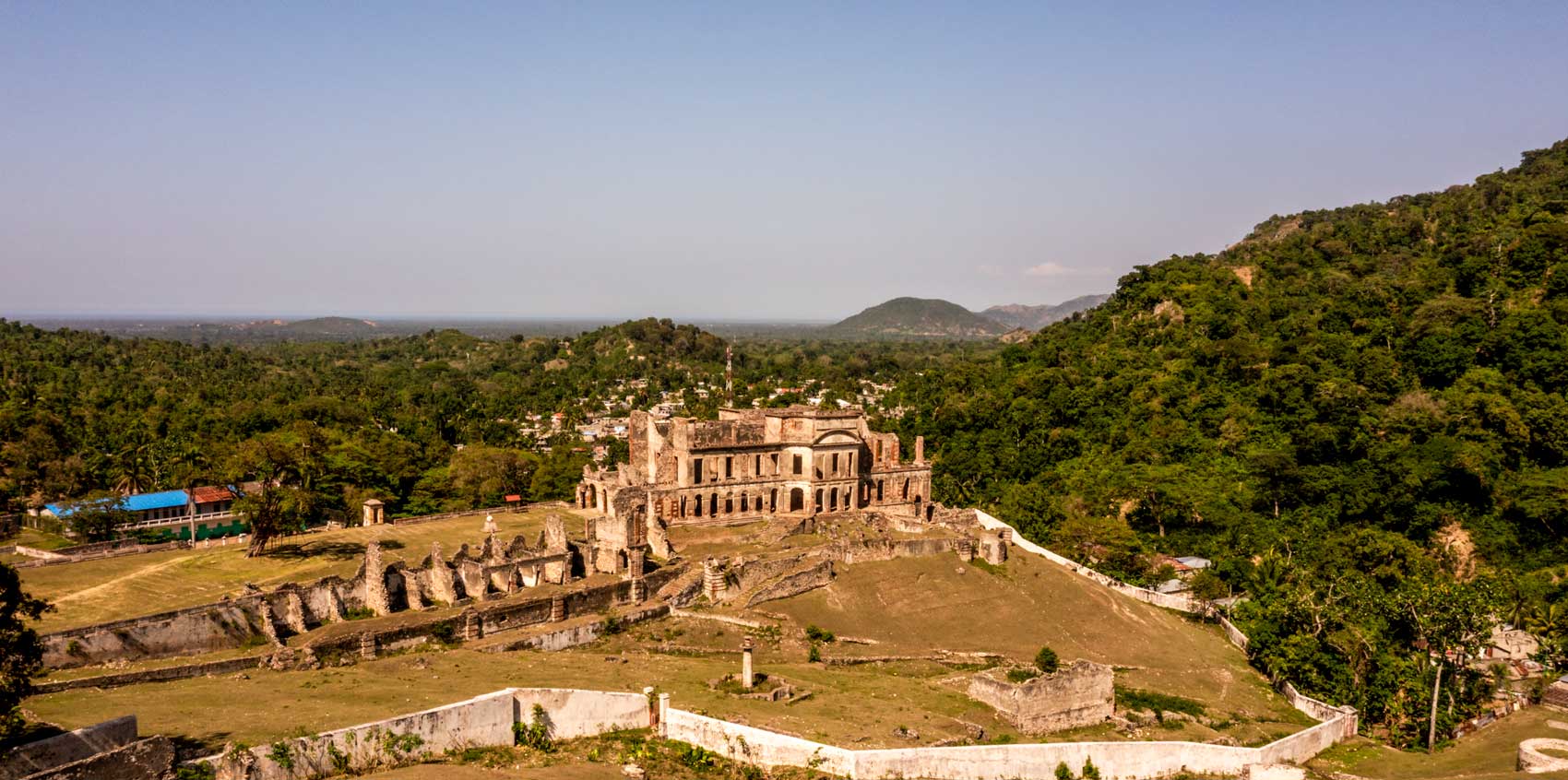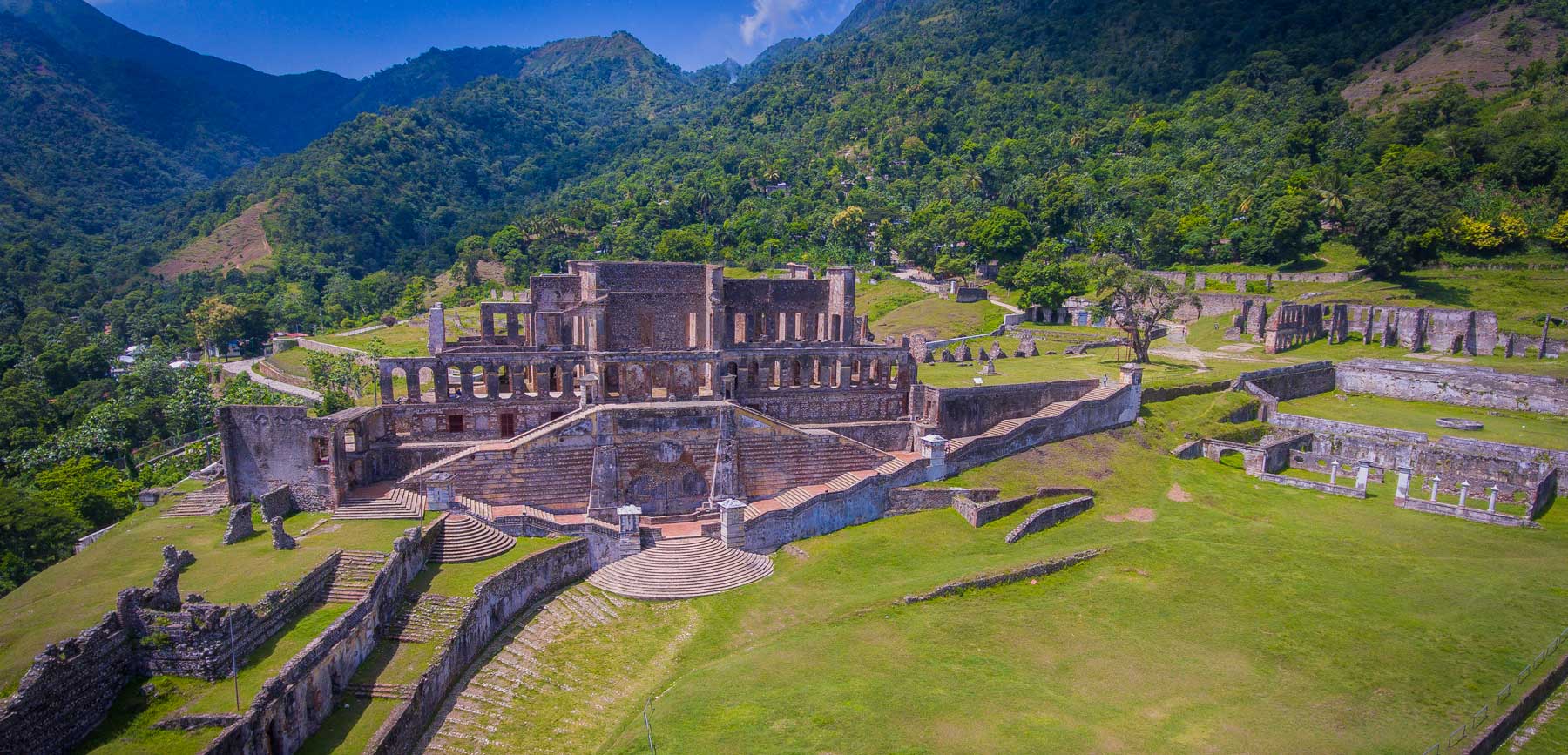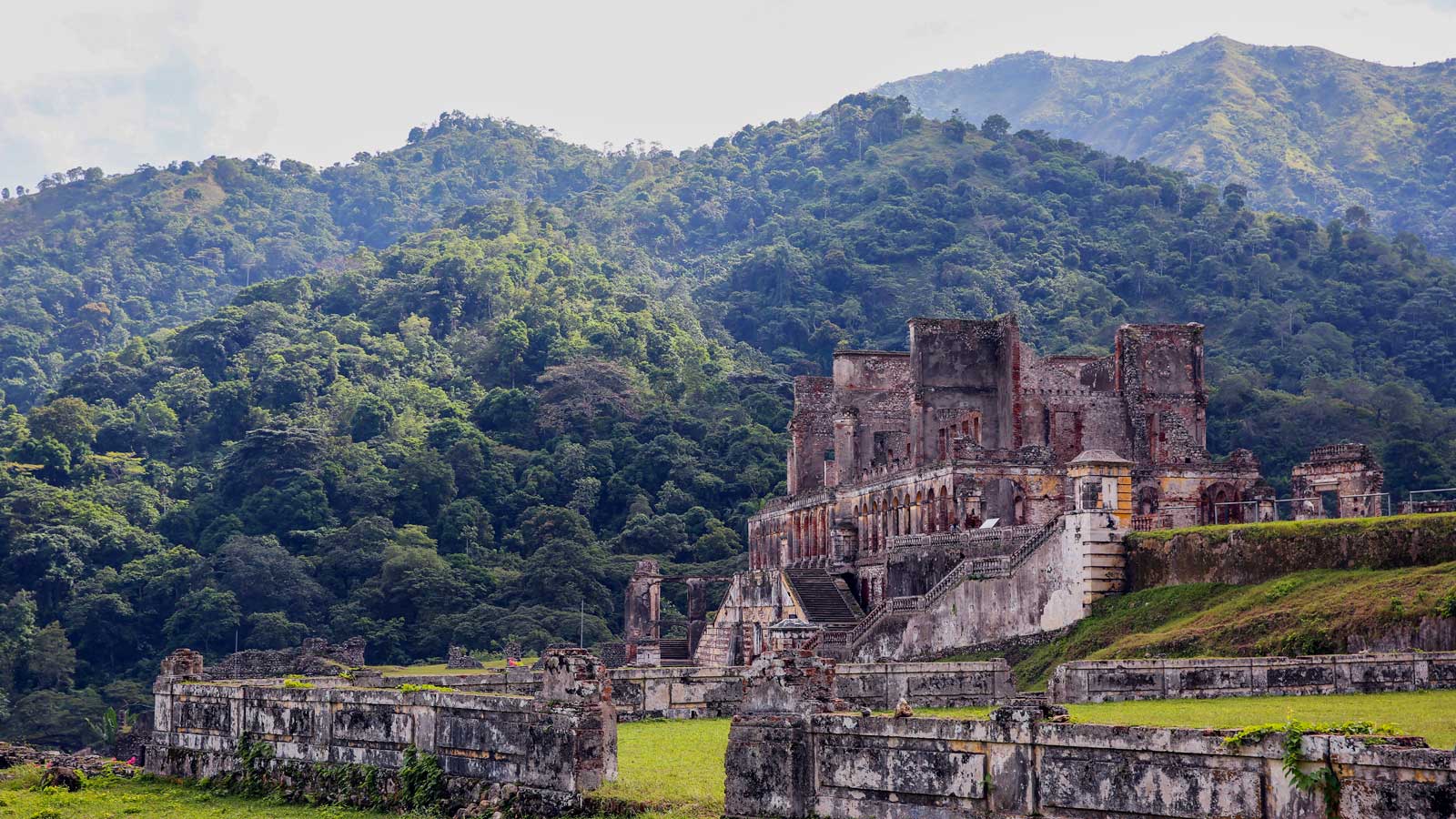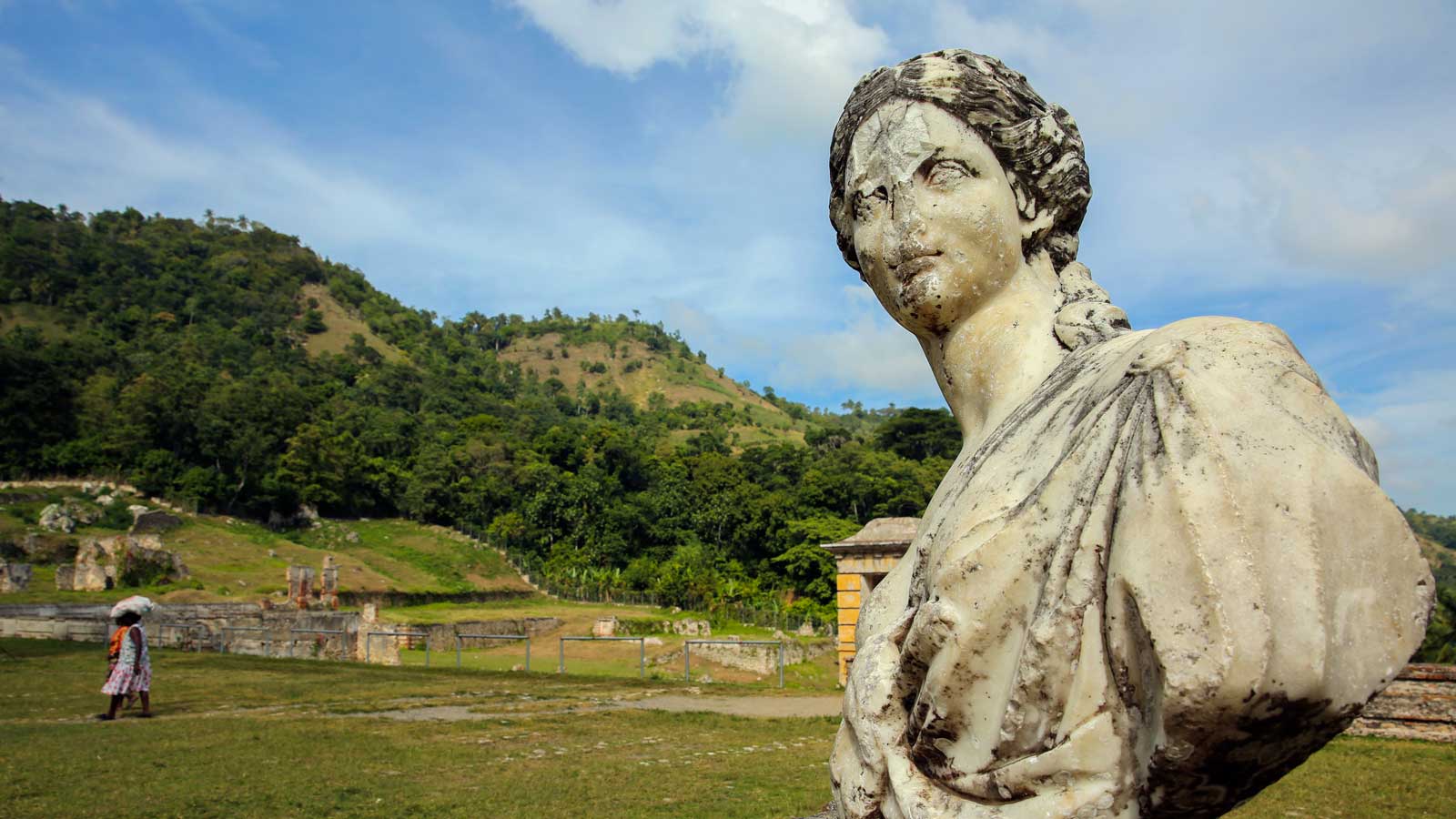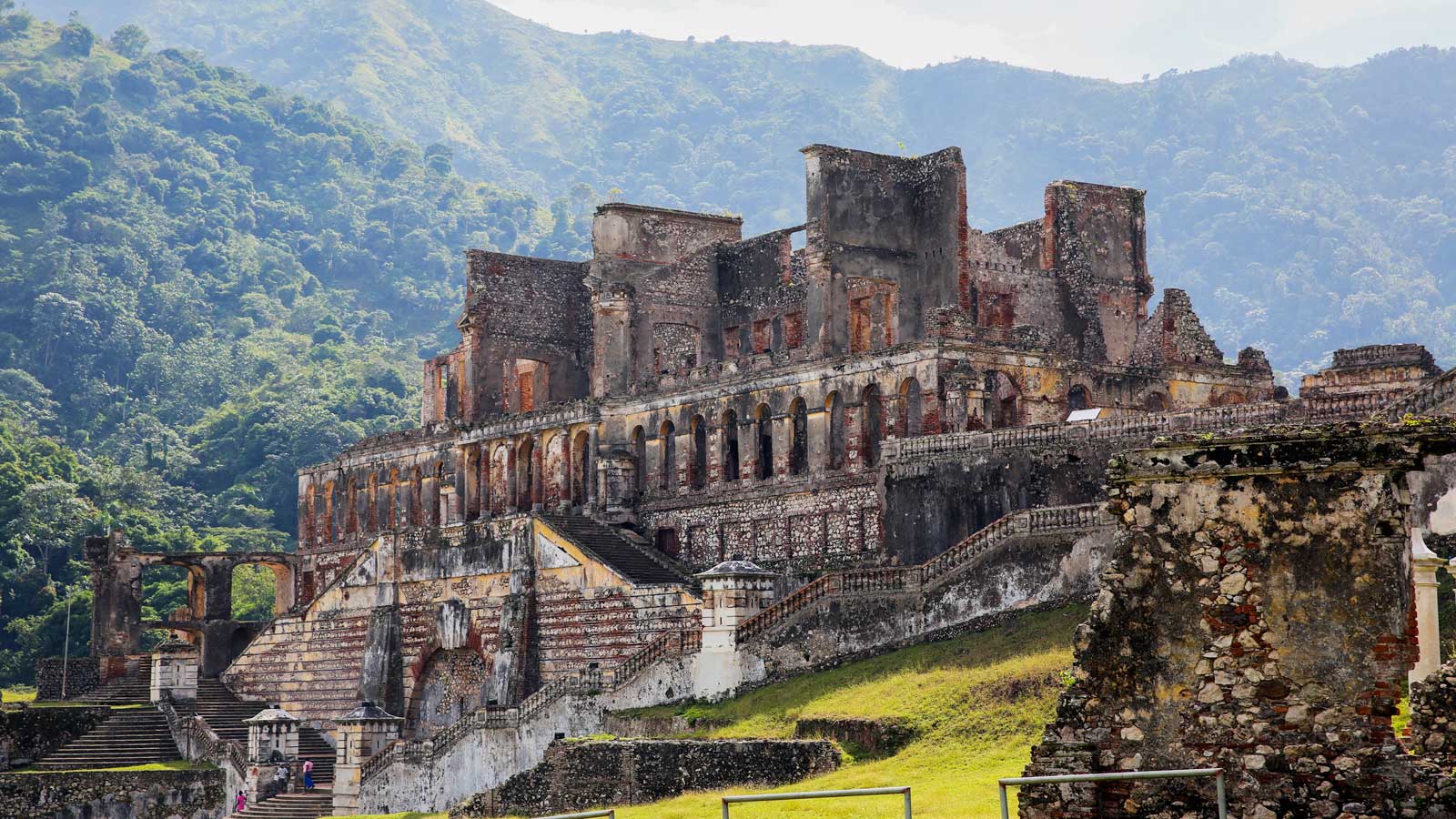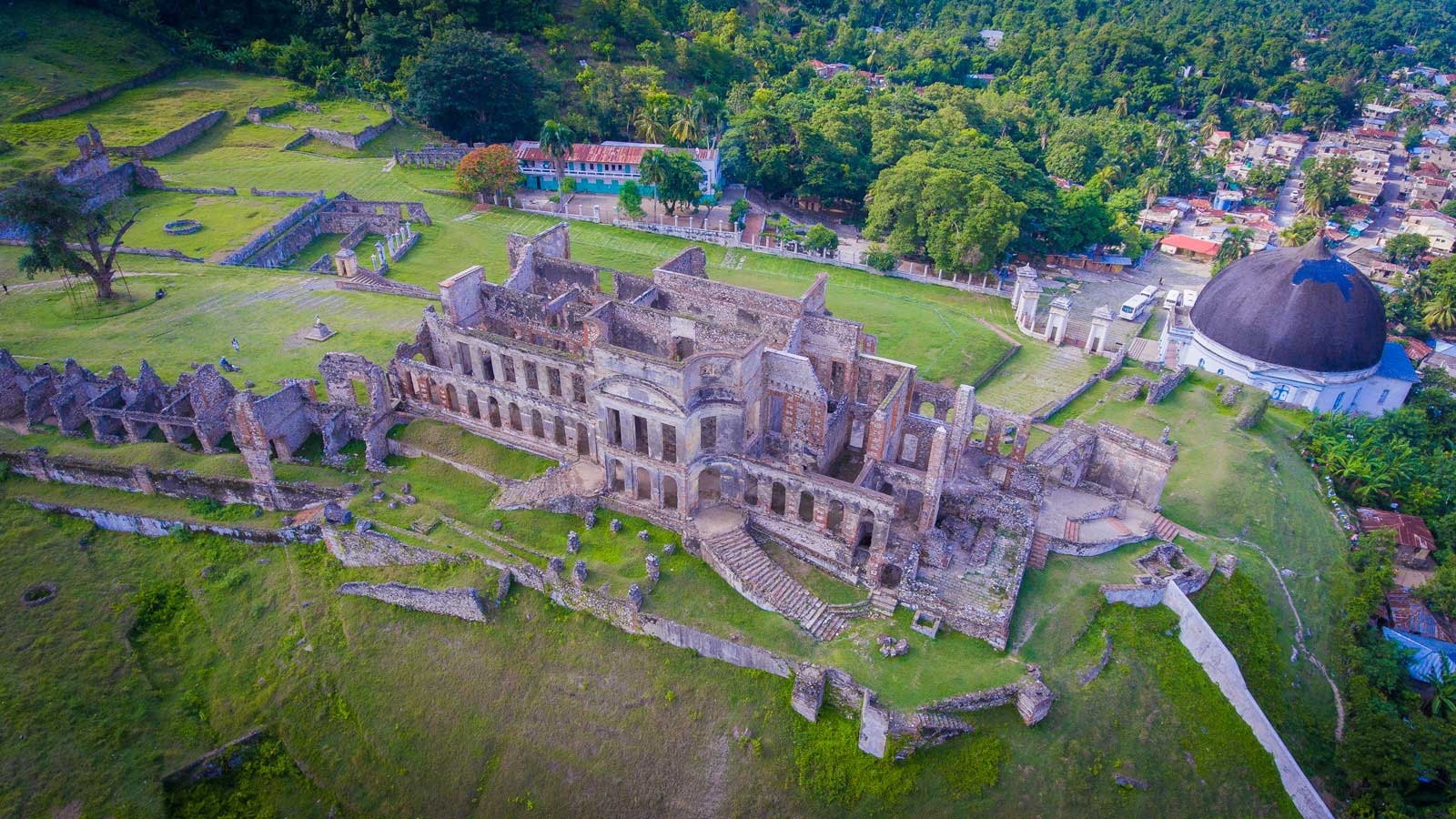
Photo: Hôtel Roi Christophe
Hôtel Roi Christophe
In the middle of the bustling city of Cap-Haïtien, Hotel Roi Christophe offers a tropical oasis that delivers on culture and delights the senses.
First Impressions
The city of Cap-Haïtien, in the north of Haiti, is home to the Roi Christophe Hotel. The hotel carries the name of the city’s founding father, independence hero, and first king of Haiti’s history. In a Creole style that gives free rein to Haitian folklore and art, the hotel opens on a magnificent little terrace with canopy chairs. A small indoor garden shadowed by nearby mango and banana trees surrounds the terrace, making for an already very relaxing sight.
Rooms
When it comes to the rooms, the showcase of exotic and Creole artworks does not compromise on any of modernity’s comforts. Spacious, and pleasantly decorated, they are reminiscent of the interiors of medieval bedrooms. Each bedroom seems to have its own identity; all while respecting a decor guideline with paintings and local furniture, each one radiates its own ambiance.
What’s for breakfast?
Visitors of the Roi Christophe hotel can wake up and enjoy different breakfast options. If you are about to run out into the city for a day of exploring, the continental breakfast is a quick and easy choice. Those staying at the Roi Christophe with children will appreciate the breakfast buffet, with something for everyone. The à-la-carte breakfast options are perfect for people staying in on a weekend, or relaxing between adventures.
How about lunch and dinner?
The hotel’s setting is perfect for small walks during sunset, or appetizers with friends before dinner. In any case, the setting is also very enjoyable, with very little outside noise to take advantage of every moment. If you are a foodie, the Roi Christophe’s cooking will enchant you with traditional dishes like grilled fish, conch, or lobster,— grilled or stewed, with Creole rice so good you’ll lick your fingers.
Is there a bar?
The hotel’s Bar du Roi is open from 6 PM until 11 PM. Close your eyes, and you can probably already see yourself enjoying the signature house rum punch by the pool, on the breezy terrace, or around a lively game of pool!
Activities and amenities
The Roi Christophe hotel houses a beautiful outdoor pool, nestled between all of the property’s trees. Next to the pool is a gorgeous exterior terrasse surrounded by greenery. It faces the charming Bar du Roi. Right next to the pool, it’s possible to enjoy a cocktail made with the fruits harvested on the property.
Within a short walk you can find…
Staying at the Roi Christophe is also a way to learn more about this king that has made, for over 200 years, the pride of an entire people and who has built great vestiges like the Citadelle, and the Sans-Souci palace. Thanks to its closeness to the Boulevard, which is chock-full of restaurant options, it’s also a way to immerse yourself in the Cap-Haitian life and to take advantage of its cuisine, and of this city that doesn’t stop attracting both Haitian and foreign tourists.
Need to know (before you go)
If you are traveling with children, you might want to be careful when it comes to letting them near or in the pool; the shallow end clocks in at 4 feet, and might not be suitable for the youngest ones who don’t know how to swim!
Getting there
For directions and bookings visit Hôtel Roi Christophe on Hotels.com
Looking for things to do in Cap-Haïtien?

Paradise for your inbox
Your monthly ticket to Haiti awaits! Get first-hand travel tips, the latest news, and inspiring stories delivered straight to your inbox—no spam, just paradise.




